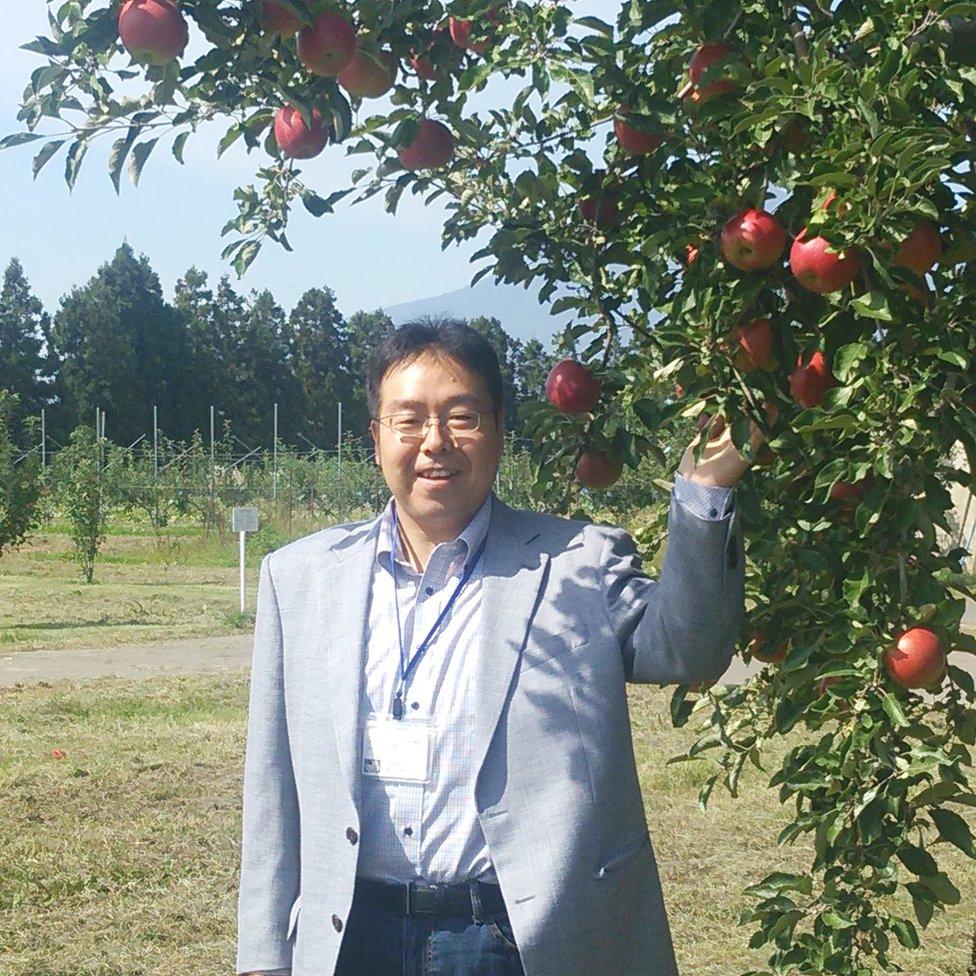Festival to celebrate 200-year-old Bramley apple
- Published
Every Bramley apple can be traced back to one 200-year-old tree
The renowned Bramley apple has been celebrated with a festival in the town where they originate from.
Every single Bramley apple ever eaten can be traced back to a 200-year-old tree that is still growing in Southwell in Nottinghamshire.
It grew from a pip sown by a young girl called Mary Ann Brailsford in 1809.
The apples are now so popular that 83,000 tonnes of them - approximately 400 million apples - were grown in Britain in 2014.

This newspaper cutting shows the tree when it was thought to be 135 years old
The Bramley Apple Festival, external was organised with the help of Roger Merryweather, great-grandson of Henry Merryweather, the first person to grow the trees commercially.
"Here we are 200 years since the first pip was sown and it's still a very popular cooking apple," said Mr Merryweather.
"The tree is showing a little bit of wear and tear as you can expect, but it bore fruit this year.
"How many more years it has to go, who knows?"
Mr Merryweather said the Bramley became popular because of its strong growth, the qualities of the fruit, and also because it can be stored for a long time.
He believes the National Federation of Women's Institutes has also done a lot to promote the qualities of the Bramley in cooking.

From one tree to thousands

Matthew Bramley (left) gave Henry Merryweather permission to grow the apples provided they had the name Bramley's Seedling
A young girl called Mary Ann Brailsford grew the tree from a pip in about 1809.
Henry Merryweather was just 17 when he came across a gardener carrying some of the apples in 1856, and asked where they had been grown. By this time, the garden containing the apple tree belonged to a butcher called Matthew Bramley.
Mr Bramley agreed that Mr Merryweather could take cuttings from the tree and grow them in his family's nursery, providing they had the name Bramley's Seedling.
There are now more than 300 Bramley growers in England, and the biggest commercial growing regions are the South East and East Midlands.
The apples are particularly revered in Japan, and there is a Bramley Apple Fan Club in the town of Obuse, where the trees are grown. Apple producer Hiroki Tomioka said he "nearly cried" when he visited Southwell in 2012 to see the original tree.

The Bramley Apple Festival was opened by Professor Matsumoto, a Japanese apple researcher
- Published30 July 2015

- Published23 August 2012
.jpg)
- Published21 October 2011
- Published16 June 2011

- Published15 June 2011